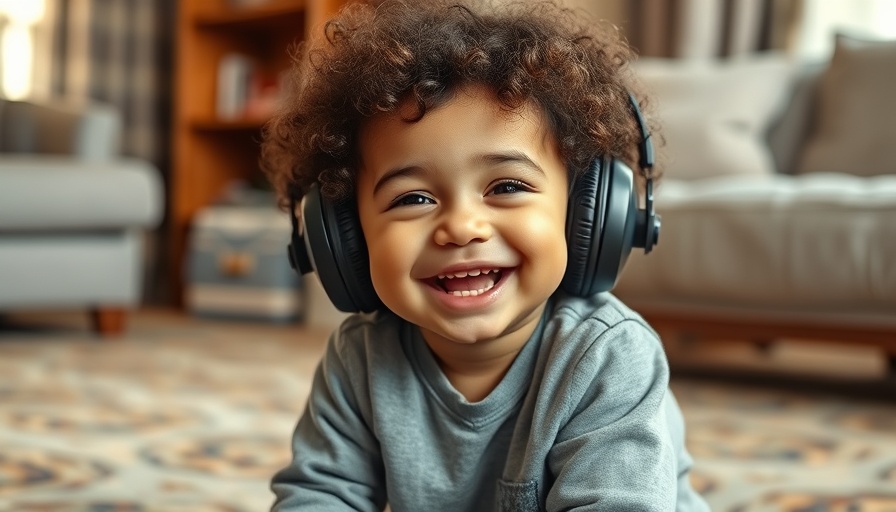
The Importance of Hearing Protection for Babies
As parents, safeguarding our children is our utmost priority, and that includes protecting their hearing. Did you know that a baby’s ears are sensitive enough to be damaged by everyday sounds? From loud environments to piercing alarms, many common noises can adversely affect their developing auditory systems. While it may seem daunting, understanding the impact of sound on your child’s hearing can empower you as a caregiver to take vital preventive steps.
Understanding Decibel Levels: What is Harmful?
One of the first steps in protecting your little one's hearing is to grasp how loud is too loud. Sounds measured at 85 decibels (dB) or higher can potentially harm hearing over time. Interestingly, a vacuum cleaner or even a hairdryer can reach this level. Consider introducing a sound meter app to your daily routine—this tool can help you gauge the loudness of environments and take action when necessary.
The Role of Hearing Protection Devices
When it comes to hearing protection, investing in high-quality earmuffs designed specifically for children is crucial. Brands like Decibel Defense have created earmuffs that boast an impressive Noise Reduction Rating (NRR) of 28 dB. These earmuffs are not just effective; they're also designed with kids in mind. Lightweight, durable, and comfortable, they ensure your child enjoys a snug fit while feeling encouraged to wear them during any loud event.
Fun and Functional: Making Hearing Protection Appealing
Kids are more likely to use protective gear if it’s fun and visually appealing. With various designs and colors available, Decibel Defense earmuffs are designed to be stylish and engaging for children. These fun designs can easily transition from home use to outings, ensuring that your child feels good about wearing their hearing protection while you feel confident they've got an added layer of safety.
Creating A Safe Sound Environment At Home
The spaces we create for our little ones play a significant role in their overall health. Here’s how to maintain a quieter home environment:
- Establish designated quiet hours each day to minimize loud activities.
- Introduce soft furnishings to absorb sound, such as carpets and curtains.
- Be mindful of your volume levels, especially during play or when watching television.
Dealing with Loud Events: Proactively Safeguarding Hearing
If you plan to attend an event with high noise levels—such as concerts or sporting events—ensure that your child wears their earmuffs. Additionally, consider arriving early to secure a more distant spot from the speakers or noise sources; this can further minimize exposure levels.
Long-term Benefits: Why Hearing Safety Matters
Protecting your child’s hearing not only preserves their immediate auditory health but also shields them from potential long-term issues, such as tinnitus or hearing loss later in life. Early protection can lead to better developmental outcomes, improved communication skills, and a more fulfilling engagement with the world around them.
Encouraging Open Dialogue about Hearing Health
As children grow, instilling an understanding of the importance of hearing safety is vital. Begin discussions about how to recognize loud noises and the benefits of ear protection. Reinforcing this dialogue with real-life experiences can foster a sense of responsibility and awareness about their environment.
Empowerment Through Knowledge
Equipping yourself with knowledge about hearing protection can make all the difference in your journey as a parent. Whether you’re deciding on the right gear or determining the safest environments for your baby, staying informed ensures that you’re making thoughtful choices. Your vigilance today will protect their ears for tomorrow.
So, let’s take small but impactful actions together by prioritizing hearing protection and teaching our children to cherish their auditory experiences responsibly!
 Add Row
Add Row  Add
Add 



Write A Comment